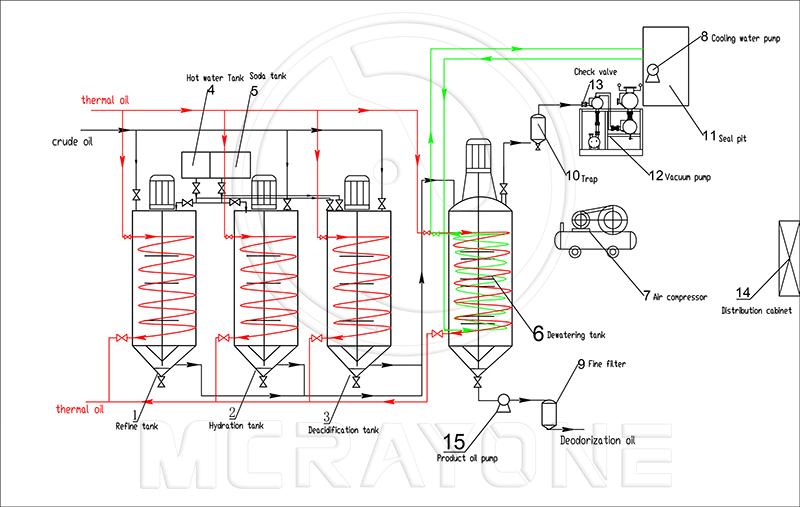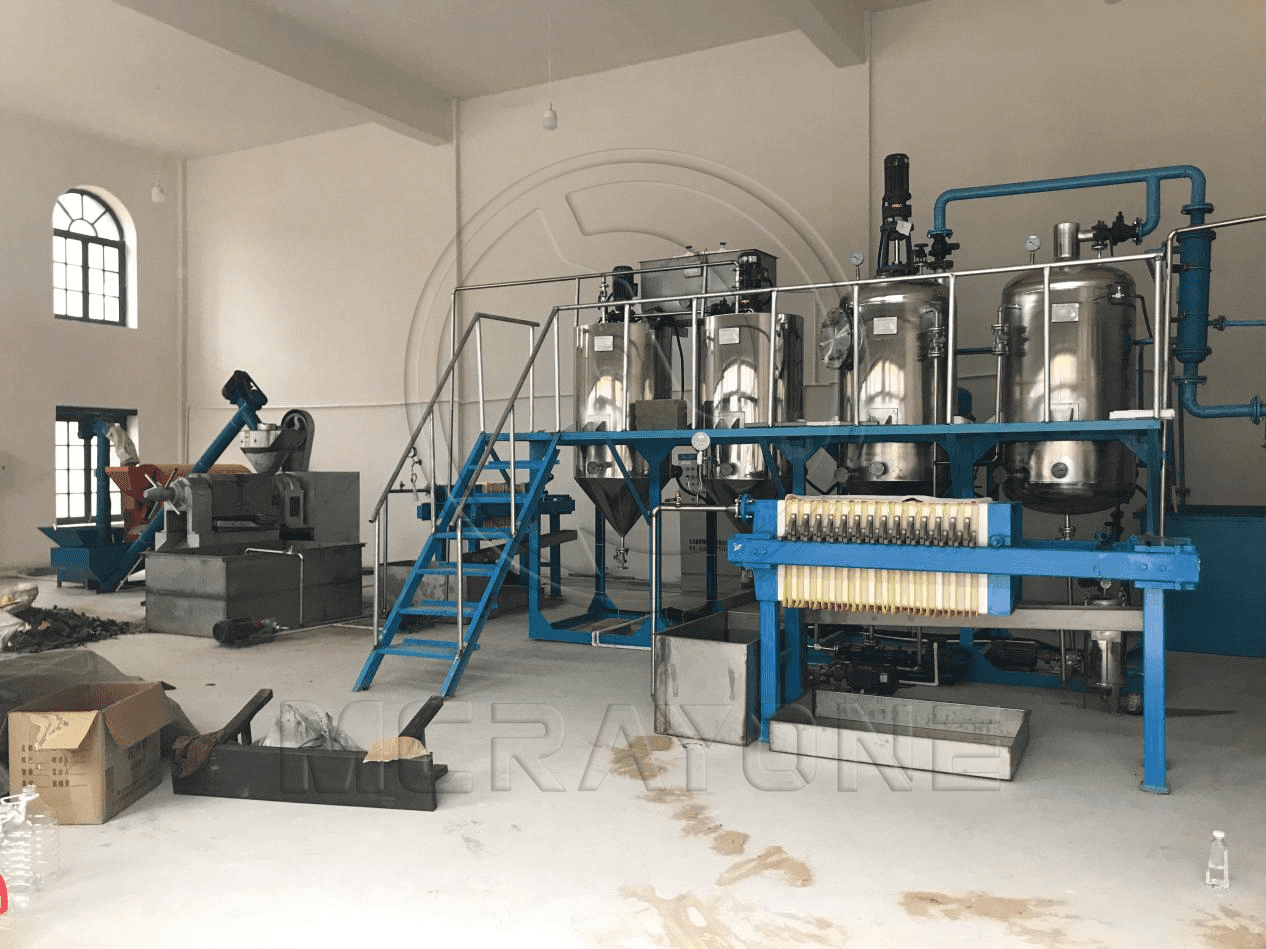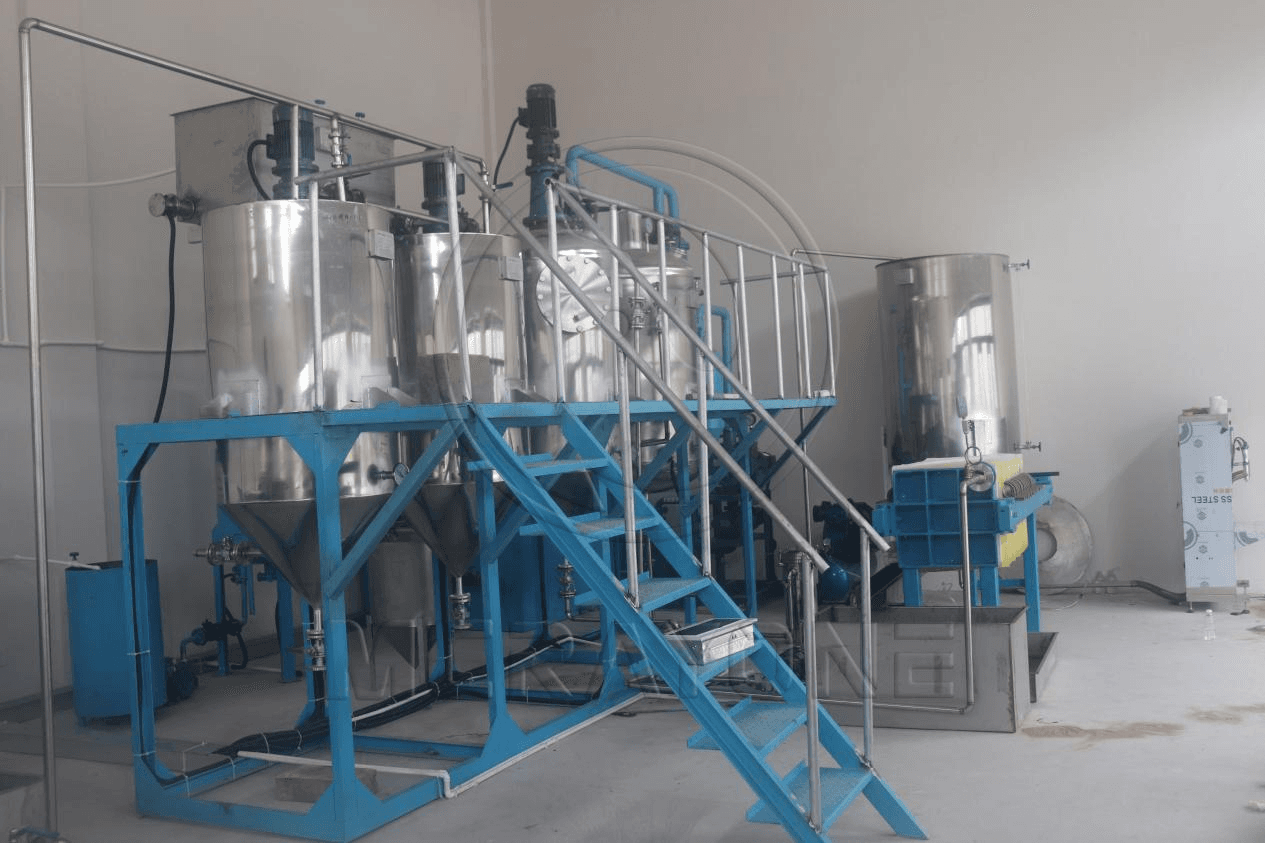
Refining process of refined edible oil (continuous deacidification, intermittent decolorization and deodorization)
phosphoric acid lye
↓
Filtration of crude oil-→preheating-→mixing-→oil-alkaline ratio-→mixing reaction-→desoaping-→soap stock
↓
Filtration←-distillation deodorization←-filtration←-adsorption decolorization←-dehydration←-washing←-soft water
↑ ↓
Refined edible oil Water vapor Waste clay Adsorbent Waste water

Difference Between Crude Oil and Refined Oil:
1) The appearance of refined oil is significantly improved.
Refining involves steps such as decolorization and deodorization, which effectively remove the undesirable colors and odors from soybean oil. This process results in clear and bright oil with no strange taste. In addition, refining can eliminate wax from the oil, making it more transparent and preventing the turbidity caused by wax precipitation.
2) Refined oil can meet a wider range of end product requirements.
Refined oil, being purer and suitable for multiple processing needs, is more suitable for industrial requirements. It is also easier to standardize compared to crude oil, which has limited applications. Crude oil is not suitable for high-temperature processes and is restricted in applications such as frying and baking.
3) Refining can yield valuable byproducts.
The soybean meal left after the pressing of soybean oil using oil press equipment is a high-protein product widely used in livestock and poultry feed, as well as in pastries, health foods, cosmetics, and antimicrobial ingredients. Additionally, the precipitate obtained after the hydration and rubber process in soybean oil refining, known as oil feet, contains phospholipids, neutral oil, water, and other lipids. This byproduct has important physicochemical characteristics, nutritional value, and finds applications in the food, medicine, and feed industries. The deodorization process can also produce tocopherol (vitamin E), which serves as an antioxidant additive to delay food oxidation.
4) Enhancing food safety requirements.
Soybean oil naturally contains linolenic acid, which can generate bean-like odors. Through refining, the content of linolenic acid is minimized, preventing the formation of isolinoleic acid and effectively eliminating the bean smell. Dehydration during refining also reduces the likelihood of soybean oil going rancid.
Refining Machine Reference Picture:


